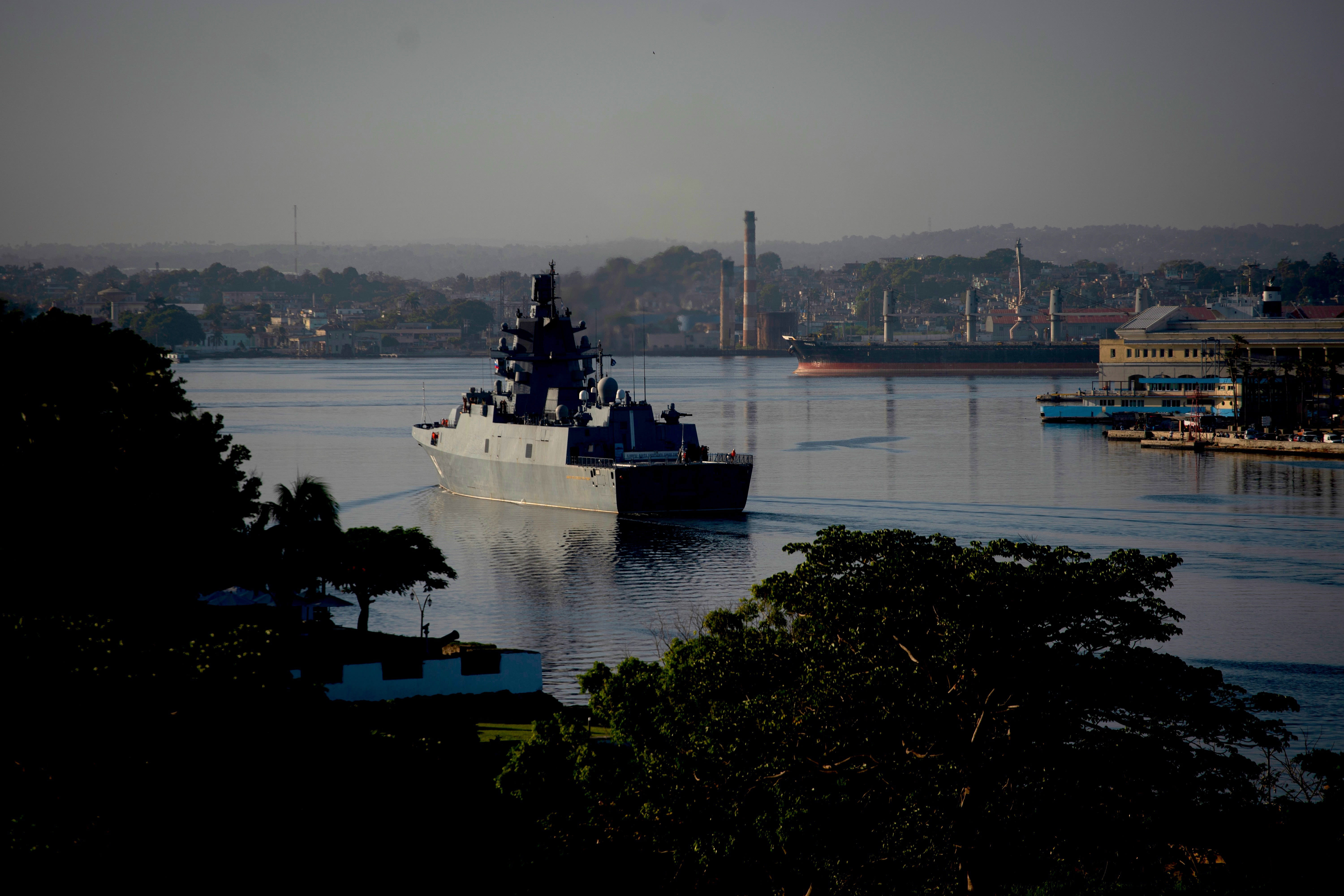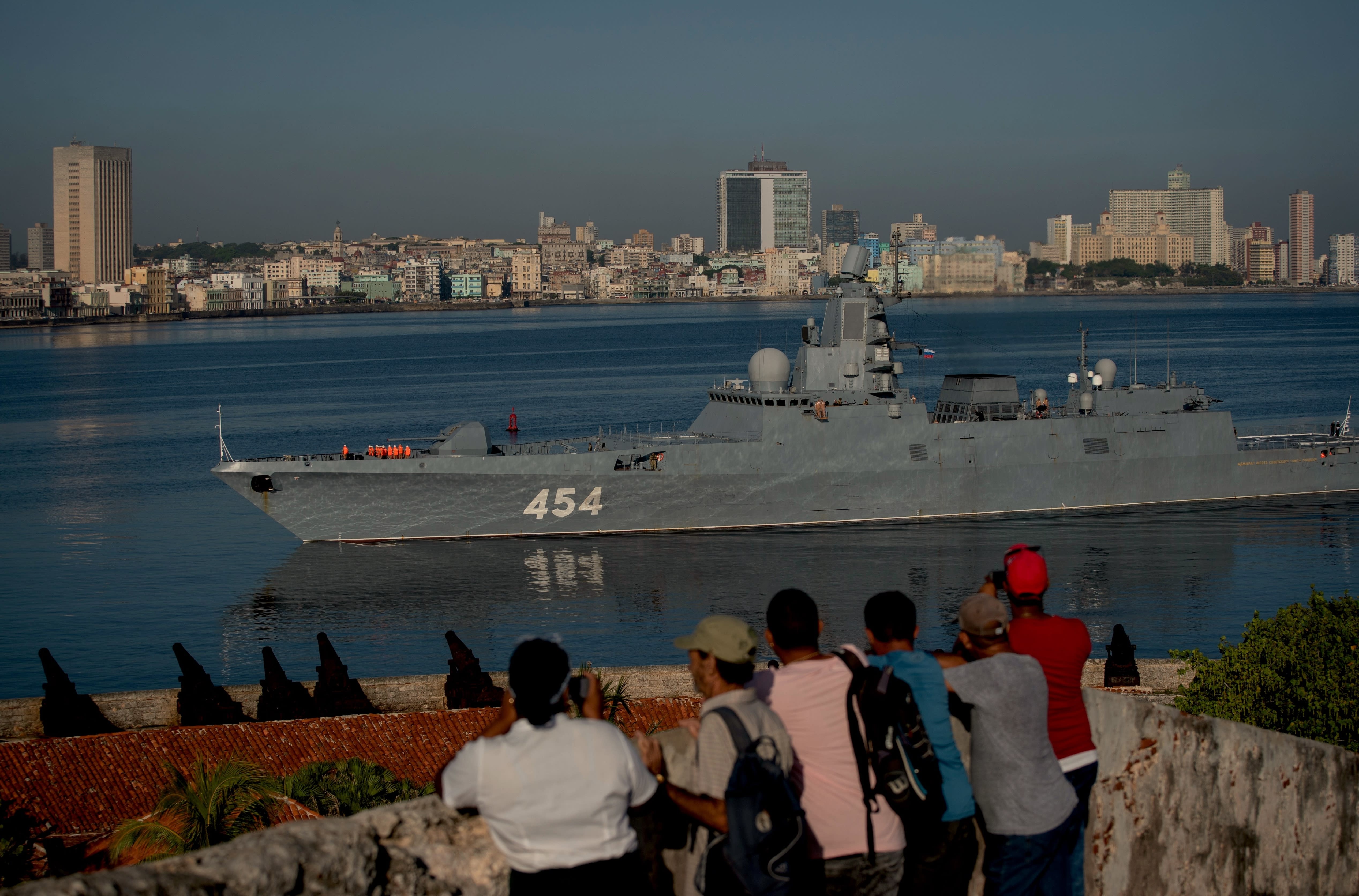Historical Presence and Activities: Russian Navy Cuba
The Russian Navy’s presence in Cuba dates back to the Cold War era. During the Cuban Missile Crisis in 1962, the Soviet Union deployed a substantial naval force to Cuba, including submarines, destroyers, and cruisers. The purpose of this deployment was to deter the United States from invading Cuba and to support the Soviet Union’s nuclear missile installations on the island.
Types of Vessels and Personnel
The Russian Navy’s presence in Cuba has varied over the years, but it has typically included a range of vessels, including:
- Submarines
- Destroyers
- Cruisers
- Support ships
The Russian Navy’s personnel in Cuba have also varied over the years, but they have typically included:
- Naval officers
- Sailors
- Marines
Reasons and Objectives
The Russian Navy’s presence in Cuba has been driven by a number of reasons and objectives, including:
- To deter the United States from invading Cuba
- To support the Soviet Union’s nuclear missile installations on the island
- To project power in the Caribbean region
- To train and exercise Russian naval personnel
Current Engagements and Cooperation
Russian navy cuba – The Russian Navy and Cuba maintain a robust partnership, characterized by ongoing engagements and cooperation. This collaboration encompasses various aspects, including joint exercises, training programs, and exchanges of personnel and equipment.
Joint exercises between the two navies provide opportunities for enhancing interoperability, coordination, and tactical proficiency. These exercises often involve simulations of various maritime scenarios, including anti-submarine warfare, search and rescue operations, and humanitarian assistance.
Training Programs
Training programs are another crucial aspect of the cooperation between the Russian Navy and Cuba. Russian instructors provide training to Cuban naval personnel in areas such as navigation, damage control, and weapons systems operation. These programs contribute to the professional development of Cuban sailors and help them adapt to the latest technologies and operational procedures.
Strategic Implications and Benefits, Russian navy cuba
The cooperation between the Russian Navy and Cuba has several strategic implications and potential benefits. For Russia, it provides access to a strategic location in the Caribbean Sea, enabling it to project power and influence in the region. For Cuba, the partnership strengthens its defense capabilities and enhances its ability to protect its maritime interests.
Additionally, the cooperation contributes to regional stability and cooperation. Joint exercises and training programs foster trust and understanding between the two navies, reducing the risk of misunderstandings and conflicts.
Impact on Regional Dynamics
The presence of the Russian Navy in Cuba has a significant impact on regional dynamics. It affects relationships with the United States and other neighboring countries and has the potential to increase tensions or cooperation in the region.
Relations with the United States
The presence of the Russian Navy in Cuba has been a source of tension between the United States and Russia since the Cold War. The United States views the Russian Navy’s presence as a threat to its national security and has repeatedly called on Russia to withdraw its forces from Cuba.
In recent years, tensions between the United States and Russia have increased over the issue of Ukraine. The United States has accused Russia of interfering in Ukraine’s internal affairs and has imposed sanctions on Russia in response. Russia has denied these accusations and has accused the United States of trying to undermine its influence in the region.
Relations with Other Neighboring Countries
The presence of the Russian Navy in Cuba has also affected relationships with other neighboring countries. Some countries, such as Mexico, have expressed concern about the Russian Navy’s presence in the region. Others, such as Venezuela, have welcomed the Russian Navy’s presence as a counterbalance to the United States.
The presence of the Russian Navy in Cuba has the potential to increase tensions or cooperation in the region. If tensions between the United States and Russia continue to increase, the Russian Navy’s presence in Cuba could become a flashpoint for conflict. However, if the United States and Russia can find a way to resolve their differences, the Russian Navy’s presence in Cuba could contribute to stability in the region.
The presence of the Russian navy in Cuba has been a topic of international concern. One notable figure involved in this situation was Francisco Alvarez , a Cuban diplomat who played a key role in the negotiations between the Soviet Union and the United States.
Alvarez’s involvement highlights the complex diplomatic dynamics surrounding the Russian navy’s presence in Cuba and its implications for regional and global security.
The Russian Navy’s presence in Cuba during the Cold War was a major source of tension between the United States and the Soviet Union. In 1971, a plane crash in Lake Champlain raised concerns about the possibility of Soviet involvement in the crash.
The incident sparked an investigation by the United States Air Force, which ultimately concluded that the crash was caused by a mechanical failure. However, the incident remains a reminder of the tensions that existed between the two superpowers during the Cold War.
The Russian navy’s presence in Cuba during the Cold War brought tensions to the forefront. The link between the two nations mirrored the diplomatic relations between México and Brazil , which had faced their own share of ups and downs.
However, despite these challenges, the Russian navy in Cuba served as a reminder of the geopolitical complexities that defined the era, shaping the dynamics of the Cold War.
The Russian Navy’s presence in Cuba during the Cold War was a major source of tension between the United States and the Soviet Union. However, the rivalry between the two superpowers also extended to other parts of the world, such as the Mexico vs Brazil football match, which was a major event in both countries.
The Russian Navy has had a long and storied history in Cuba, dating back to the Cold War era. During the Cuban Missile Crisis, the Soviet Union deployed nuclear-armed missiles to Cuba, which brought the world to the brink of nuclear war.
In recent years, the Russian Navy has returned to Cuba, conducting joint exercises with the Cuban military and establishing a permanent naval base on the island. The Russian Navy’s presence in Cuba is a reminder of the Cold War era and the ongoing geopolitical tensions between Russia and the United States.
For more information about the Russian Navy in Cuba, please visit this website.


